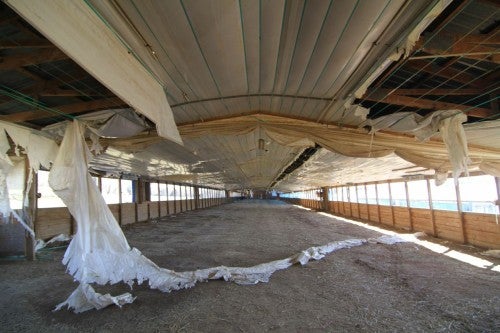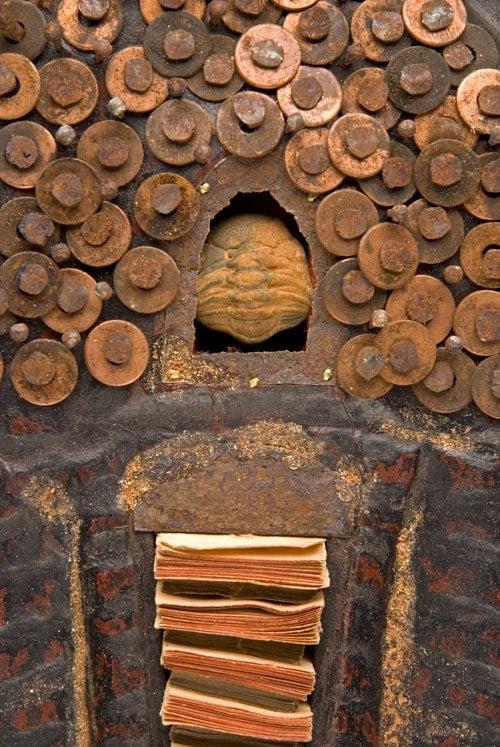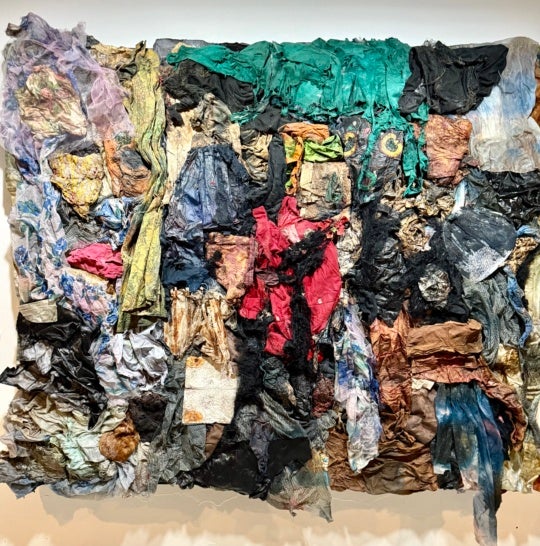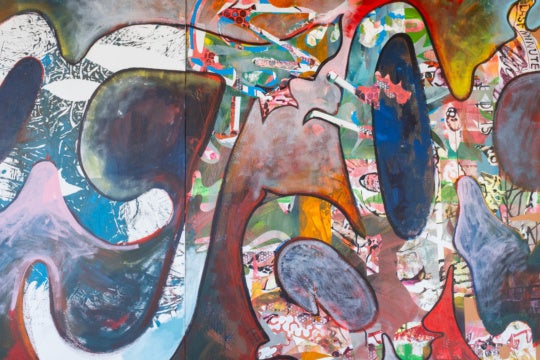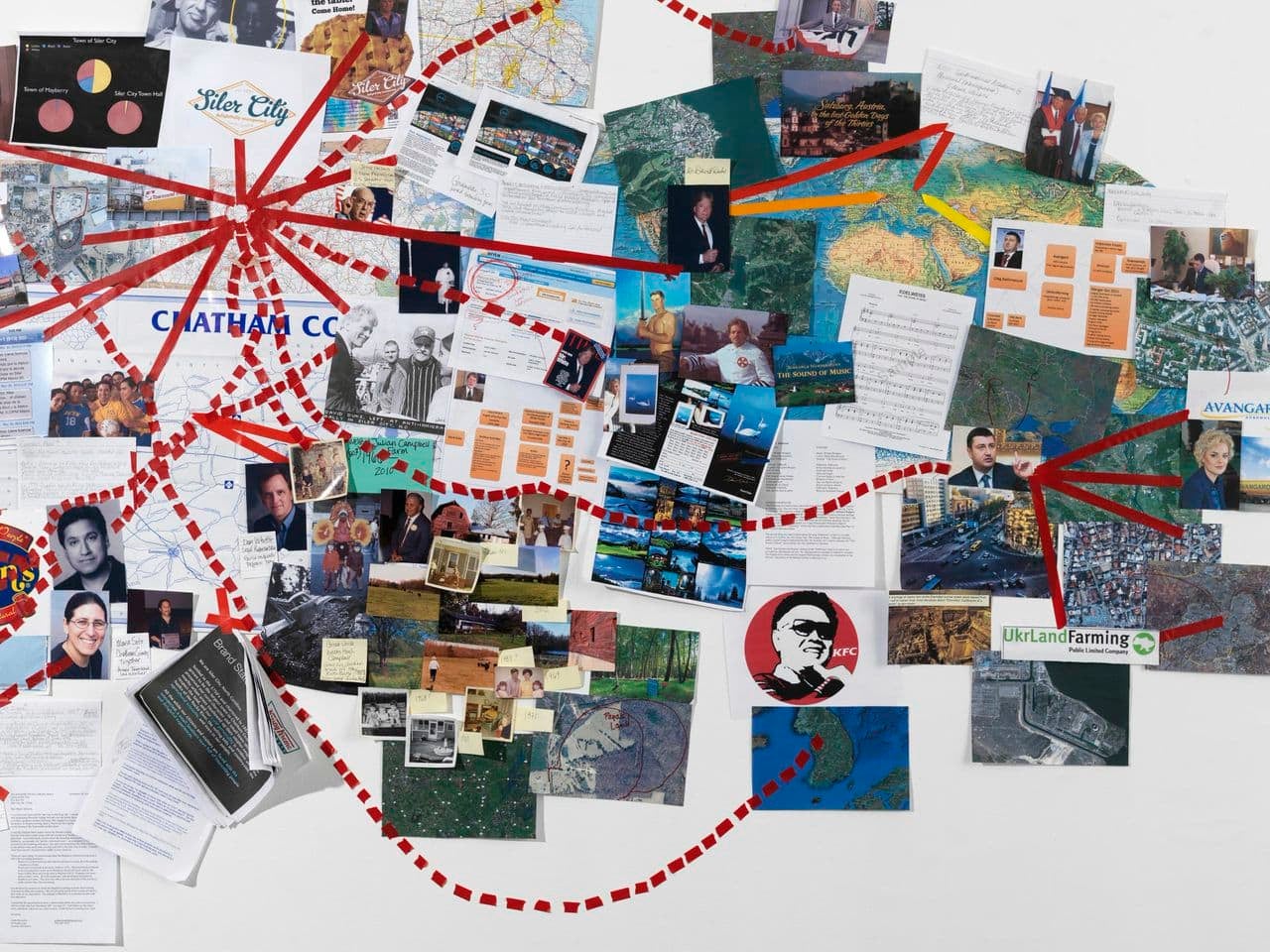
Cathy McLaurin grew up in Silk Hope, a small community near Siler City, North Carolina. Her solo exhibition, “The North Wind and the Sun,” at the Power Plant Gallery at the American Tobacco Campus through August 15, shares a story of the Townsend Poultry Processing Plant that propped up her hometown’s economy for years.

The exhibition’s setting is a plus. Having been a power plant in the past, the space is cavernous and has immense, coal-fired boilers just outside of the gallery. Its antiquated technology provides a correlation with the sometimes negative impact of industrial progress, but the exhibition makes it clear that innovation is not always to blame for the departure of an industry—and its jobs—from a region.
The exhibition title is from a fable by the Greek storyteller Aesop (c. 620-564 BCE), in which the sun, with its warm, soothing rays, proves more persuasive than the harsh north wind. Implicit in this tale is that we can all be fools for the sun. McLaurin uses investigative research and discourse as the heart of her project, and she seeks to give us sunglasses, so to speak, to examine complex, 21st-century economic and social systems. She organizes her findings in four distinct ways: a wall collage, a half-hour video, 12 photographs, and an artist’s book. We learn that corporate machinations link the fate of Silk Hope to interests in places as distant as Cyprus, South Korea, and the Ukraine.
Like Mark Lombardi drawings on steroids, McLaurin’s striking sprawling collages comprise dozens of papers taped to the wall. The effect is reminiscent of scenes in TV and movie mysteries, in which detectives become obsessed with their case, covering a wall of their apartment or office with documents. The Siler City logo is at its center—the branding of the town in 2011 plays a big role in this saga—with tributaries of photos, articles, and newspaper clippings spread outward and connected by trails of red tape peppered with Post-it notes. Organized geographically, the collage describes the relationships of people and events that have affected the current economic depression of Siler City. McLaurin’s unflinching examination includes the Ku Klux Klan, racial profiling in multiple generations, and the greed of corporate heads in foreign countries .The chart also traces the diverse residents of Siler City to Mexico, Brazil, and other Latin American countries.

The collage enables McLaurin to include the extra information that in typical narratives is edited out or glossed over, creating a cohesive, in-depth storytelling arc. It makes visible her persistent search for open dialogue with Siler City town officials, former poultry plant workers, and even her own family. Specificity is one of McLaurin’s strengths. Rather than merely state that minority cultures are systematically excluded from local politics and basic human consideration, she identifies how the brand statement written for the city in 2011 by the company Muldrow and Associates compares Siler City to Mayberry, the fictive television town of the Andy Griffith Show, set 50 years in the past and with a notably white cast. Indeed, the branding committee contained only white members—some of whom apparently thought that the Latinos would leave with the poultry jobs.
For insight into the experience of the town’s Latino population, McLaurin interviewed Paul Cuadro, an investigative reporter from Siler City and a journalism professor at the University of North Carolina at Chapel Hill. A photo of Cuadro and related notes are included in the wall collage, and his interview plays in a video projection. Since the 1990s, when the Latino population began to grow, many white parents pulled their children from public schools. Cuadro says that minority families remain in such unwelcoming environments because the U.S. provides hope that the next generation will do better.
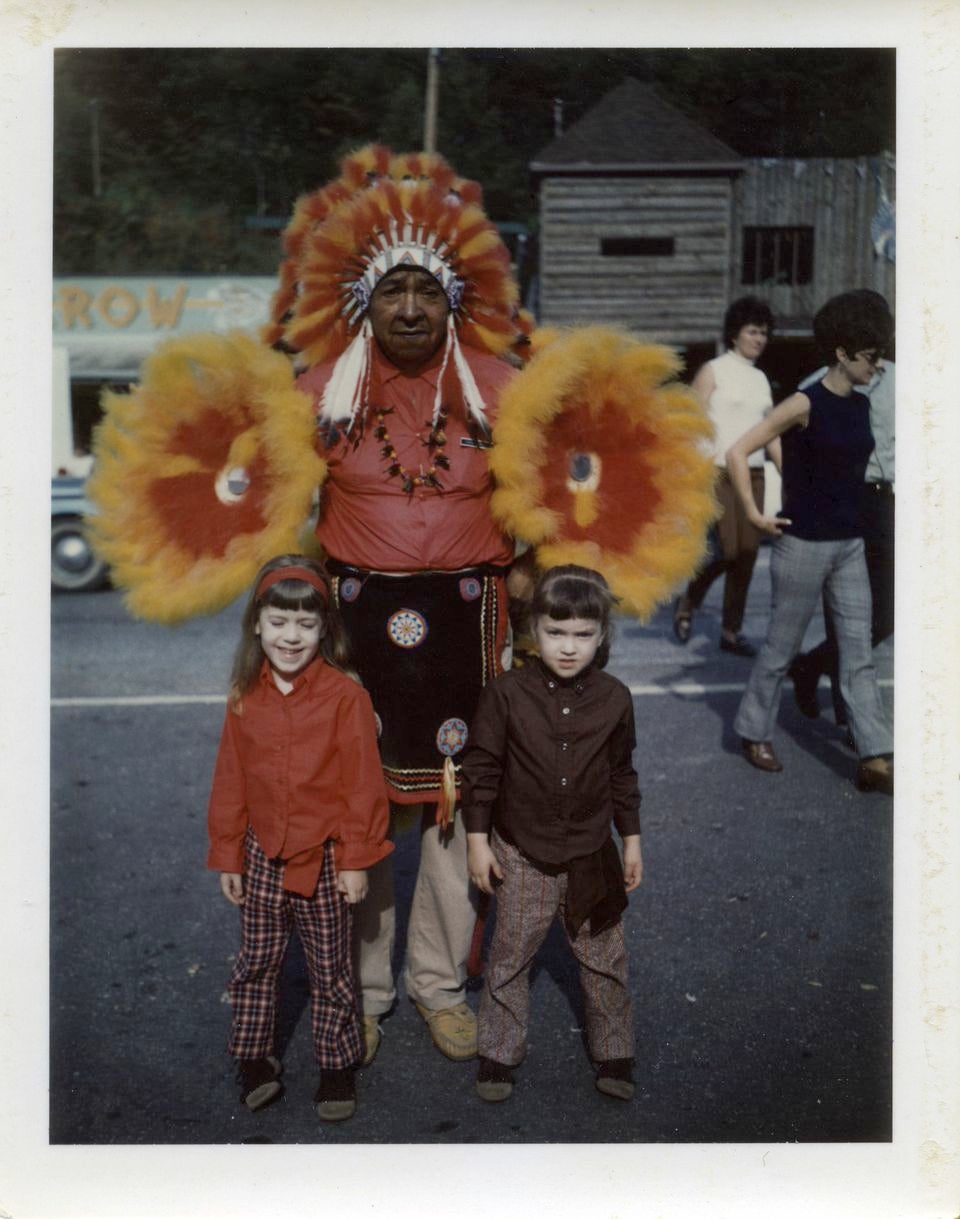
The video opens with a smoothly rolling view of Siler City, as though from a vehicle. The artist narrates: “Be careful when you ask a Southerner a question that you have enough time for the answer, because their response is often a story.” McLaurin describes helping to debeak the chicks for her grandparents from the age of four, and how she learned only after having commented on how delicious Sunday dinner was that her pet chicken Henry was the one on the table that week. Her voice at times betrays her emotion, and one senses a mix of frustration with and attachment to her hometown.
Her limited edition artist’s book stands propped on a pedestal. It contains much of the research that is in the wall collage. McLaurin includes her letters to Mayor Johnson of Siler City; Oleg Bakhmatyuk, a Ukrainian billionaire who bought and then promptly closed one of the poultry plants; and David Duke, politician and former grand wizard of the Ku Klux Klan, who attended a Siler City KKK rally in 2000 at the invitation of a resident. The book also contains her handwritten notes, photos, and passages from other sources, including The Road by Cormac McCarthy, which reads, “You forget what you want to remember, and remember what you want to forget.” Also on view are photographs of disused structures: two Siler City poultry plants and chicken houses that stand empty.
With complex economic systems and 21st-century social politics as the subject at hand, McLaurin’s project is an interesting case study. She said, “With the title of ‘artist,’ I was able to gain access that others did not—or felt they did not—have.” “The North Wind and the Sun” demonstrates how true understanding may appear less coherent than neat assumptions, and it reveals tendencies, such as the willingness to compartmentalize information, that keep us from social and economic equality and progress.
Shana Dumont Garr is a Raleigh-based contemporary art curator, writer, and the Director of Programs and Exhibitions at Artspace, NC.
The Power Plant Gallery at American Tobacco Campus is a Joint Initiative of the Center for Documentary Studies and the MFA in Experimental and Documentary Arts at Duke University.
